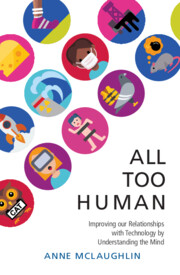Book contents
- All Too Human
- All Too Human
- Copyright page
- Contents
- Figures
- Tables
- Preface
- Acknowledgments
- Introduction
- 1 “Brace for Impact”
- 2 Bad Water
- 3 Hybrid Vigor
- 4 A Mind Divided
- 5 All the Light We Cannot See
- 6 Mistakes
- 7 History Repeating?
- 8 Needles in Haystacks
- 9 Apt Pupils and Alien Invaders
- 10 A Relative to Truth
- 11 Old Principles for New Worlds
- Conclusion
- Notes
- References
- Index
5 - All the Light We Cannot See
Published online by Cambridge University Press: 27 January 2022
- All Too Human
- All Too Human
- Copyright page
- Contents
- Figures
- Tables
- Preface
- Acknowledgments
- Introduction
- 1 “Brace for Impact”
- 2 Bad Water
- 3 Hybrid Vigor
- 4 A Mind Divided
- 5 All the Light We Cannot See
- 6 Mistakes
- 7 History Repeating?
- 8 Needles in Haystacks
- 9 Apt Pupils and Alien Invaders
- 10 A Relative to Truth
- 11 Old Principles for New Worlds
- Conclusion
- Notes
- References
- Index
Summary
The chapter offers visceral examples of the limits of human attention and how technology can be used to counteract those limitations. It opens with a story about world-famous rock climber Lynn Hill and an instance where she forgot to tie herself correctly to the rope - resulting in a fall of over 40 feet. This rock climbing accident provides a basis for exploring what attention is, the different types of attention, and why attention explains the creativity inherent in ADHD. There is also a short test readers can take to experience the limits of their own attention. Next, we explore some controversial stories of people who forgot their children in hot cars. Attention research explains why we can’t expect parents to stop forgetting and why we need safeguards other than admonishing people to “be more careful.” A last grim example documents the kinds of injuries people get from table saws, totaling about 4,000 missing fingers per year. The title of the last section is “Safety Doesn’t Sell,” because people are unwilling to pay extra for safety features since they think these accidents won’t happen to them. Table saw manufacturers have fought requirements for providing safety systems but the conclusion restates that since we cannot improve or extend human attention, technological solutions are our only hope.
Keywords
- Type
- Chapter
- Information
- All Too HumanUnderstanding and Improving our Relationships with Technology, pp. 53 - 64Publisher: Cambridge University PressPrint publication year: 2022

